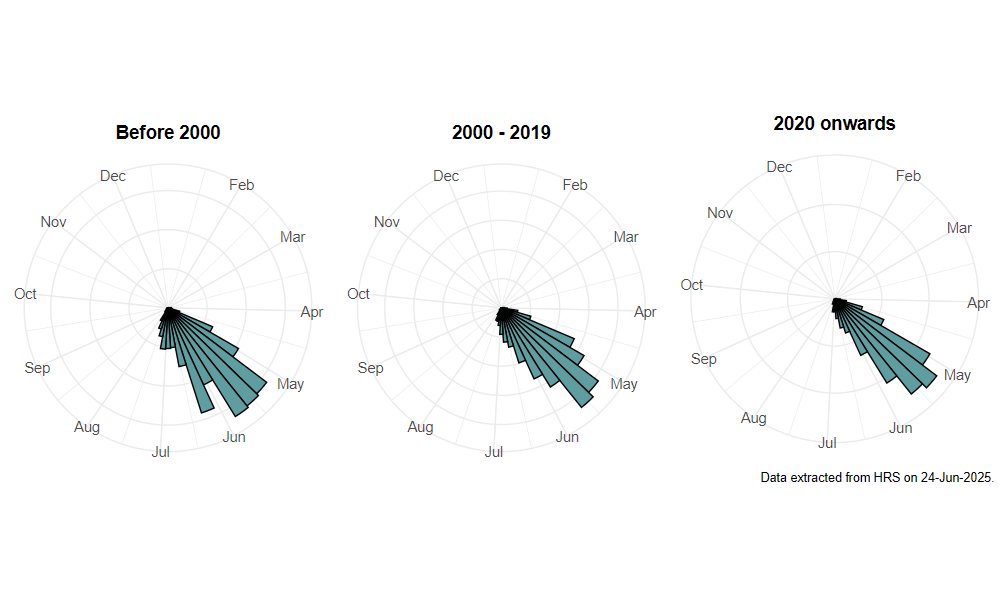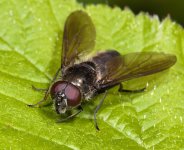Cheilosia variabilis (Panzer, 1798)
Identification
Identification difficulty = 2. ![]()
![]() according to Ball & Morris, 20241
according to Ball & Morris, 20241
Biology
The larva tunnels the roots of Common Figwort Scrophularia nodosa and Water Figwort S. auriculata. Adults are usually found in damp woodland rides or similar lush, wooded locations, and have been seen visiting the flowers of Scrophularia sp. The males, which are distinctive because of their large size, elongate form and long, dark wings, are commonly found basking on sun-lit leaves.
Flight period
The following plots show the number of unique records per week excluding those reported to be of immature stages.

Distribution
Most records are from sites below an altitude of 200 metres. This species occurs widely in lowland locations but is evidently a mainly southerly species that is most abundant east a line between the Tees and the Severn.

Trends
The following plots show the Frescalo TFactor vs year and a map of the rescaled frequency (all records) for the species.
-
Ball, S., & Morris, R. (2024). Hoverflies of Britain and Ireland. WILDGuides (3rd ed.). Oxford: Princeton University Press. ↩
